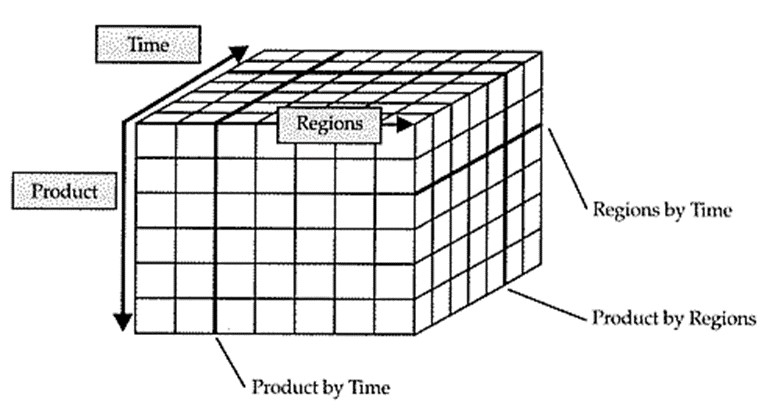Business intelligence, based on the analysis of aggregated data, is one of the most important topics in the business world today. More and more companies are realizing the importance of collecting, storing and analyzing various data present in business processes in order to achieve competitive advantages. Considering the variety of business intelligence technologies available for efficient data analysis, it is important to choose the right tool that provides fast and accurate results. This article focuses on a tool that has proven to be effective: OLAP.
Online analytical processing (OLAP) is a database structure optimized for quickly displaying multidimensional data. OLAP databases are often referred to as “cubes,” which are an efficient way to represent multidimensional data. OLAP databases are typically implemented as purpose-built relational databases that are optimized to quickly produce results when querying. OLAP databases can significantly outperform flat-file databases and typical or transactional relational databases in quickly answering multidimensional queries.
When using OLAP, the stored data is pre-aggregated, which can provide instant results even for large volumes of data. Cubes can have multiple dimensions that can be used to aggregate, partition, and slice data. In addition, dimensions can be divided into hierarchies, which are created directly in the cube.
This allows you to effectively explore business data, which is a clear reason to consider using business intelligence tools that use OLAP, such as Ranet OLAP – a set of powerful controls for proper data analysis.
Why OLAP is important for sales and more
By collecting, processing and analyzing key indicators, you can, for example, improve your digital sales by focusing on the needs of your customers. To better identify these desires, you need BI tools. And they are based on OLAP technologies.
Let's take a look again at what the individual technical terms mean and how they are related.
OLAP technology is the basis of business intelligence (BI). This analysis extracts useful information (keyword “big data”) from gigantic volumes of data to adapt business processes and strategies.
What is the difference between OLAP and OLTP?
OLAP and OLTP are terms that sound similar, but should not be confused. OLTP is Online Transaction Processing. The synonymous term "real-time transaction processing" describes this more accurately.
OLTP systems refer to current sets of data that are available to you “live” and which you can analyze. OLAP often works in conjunction with a data warehouse, a collection of data from various sources. This can lead to the transfer of relevant data into so-called data marts, which the OLAP system accesses via queries and creates a “data cube”.
This means: OLAP is used when you want to analyze large amounts of data. This requires processing power and time, so real-time processing as with OLTP is not possible.
OLAP servers and their importance
The data stores accessed by an OLAP database are not located on the HD of your desktop computer. Instead, it is one or more servers connected to various systems, such as a data warehouse or ERP system.
Additionally, not all OLAP servers are the same. There are different forms in IT including ROLAP, MOLAP, HOLAP and DOLAP.
What do ROLAP, MOLAP, HOLAP and DOLAP mean?
- ROLAP: Relational OLAP is based on a relational database.
- MOLAP: Multidimensional OLAP based on a multidimensional database.
- HOLAP: Hybrid OLAP is a combination of MOLAP and ROLAP.
- DOLAP: When using Desktop OLAP, certain master data is stored on your computer.
Each OLAP variant has its own advantages and disadvantages. For example, ROLAP systems scale better, but they are not as fast as a MOLAP architecture.
How to work with an OLAP cube
When you're conducting analysis in your sales department, for example, you don't always need the "big picture." Rather, you want to look at individual parts of the big picture to draw conclusions from them.
No problem, because with OLAP Cube you can perform various operations:
- Slicing: You "cut" a thin, two-dimensional portion out of a cube to focus on one piece of information. For example, you are viewing all data by product or fiscal year only.
- Dicing: You take a three-dimensional or larger portion of the entire cube, but compress the boundaries. For example, you are not interested in all products and sales data in all regions, but rather limit yourself to a few products and a clearly defined territory.
- Drill-Down: You dive into the depths of a data cube. For example, you switch from year view to month or day view.
- Drill-Up or Roll-Up is the opposite of Drill-Down: you symbolically switch to a bird's eye view: for example, your dice do not show the sales figures of a city, but the indicators of a country or continent.
Things to keep in mind when implementing OLAP.
There are a variety of OLAP solutions on the market, from both large and smaller vendors. On the one hand, find out in detail about the functionality of the system, features of its operation and cost. On the other hand, it is important to look at performance and scalability: a system that produces reports in seconds for a small company due to a relatively small number of requests should not take hours as the company grows, but should remain just as efficient.
And clearly define why you need online analytical processing now and what problems the OLAP system will face in two, five or even ten years. And remember that thanks to digitalization, the “big data mountain” is growing rapidly.


